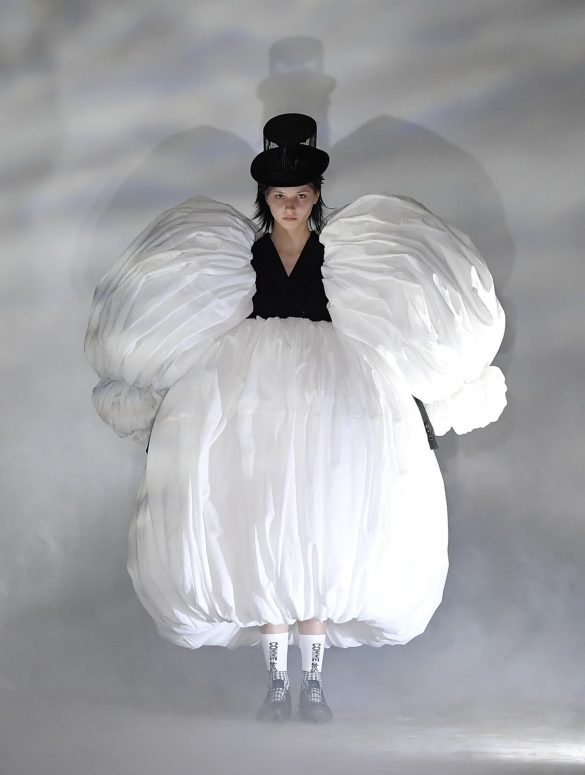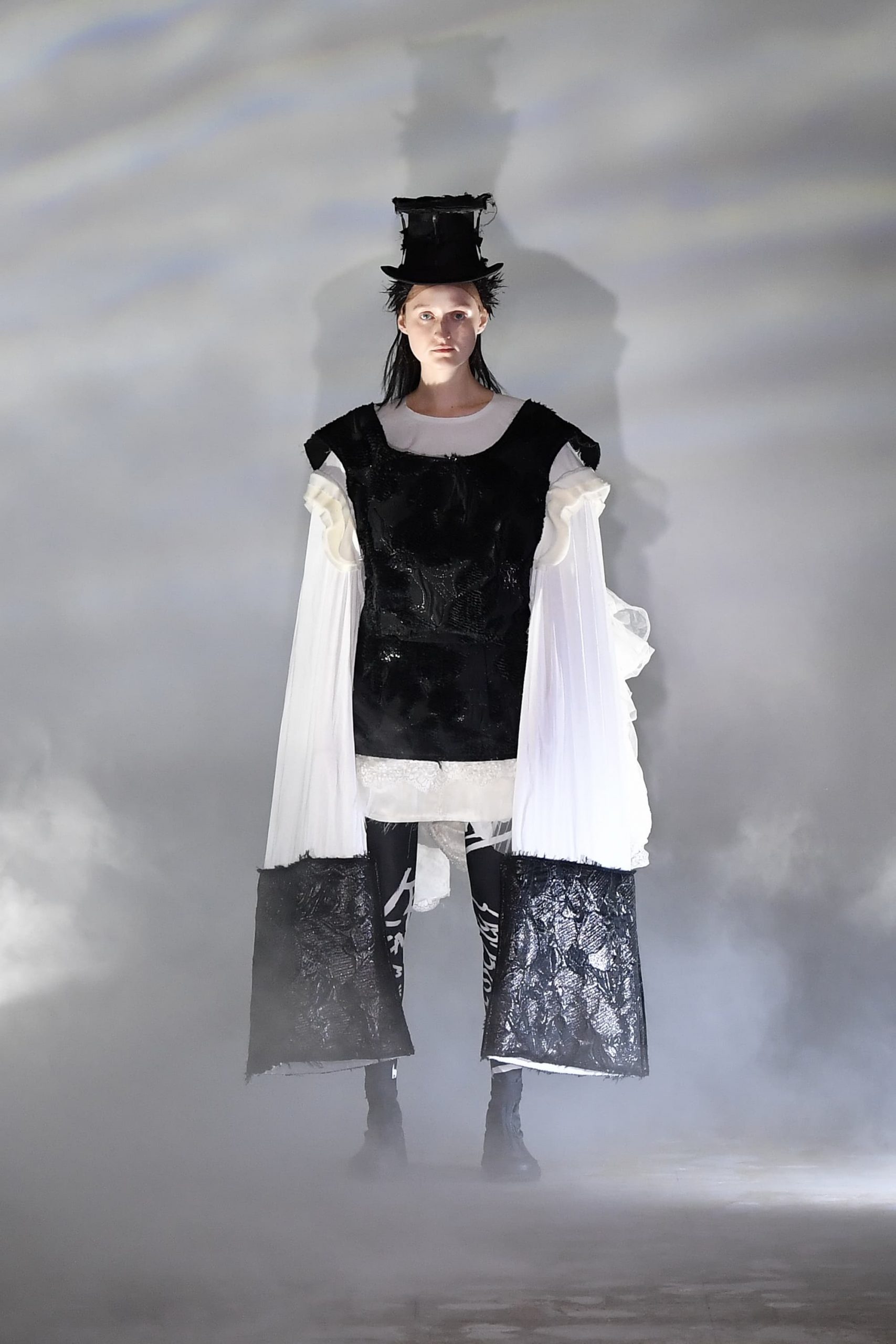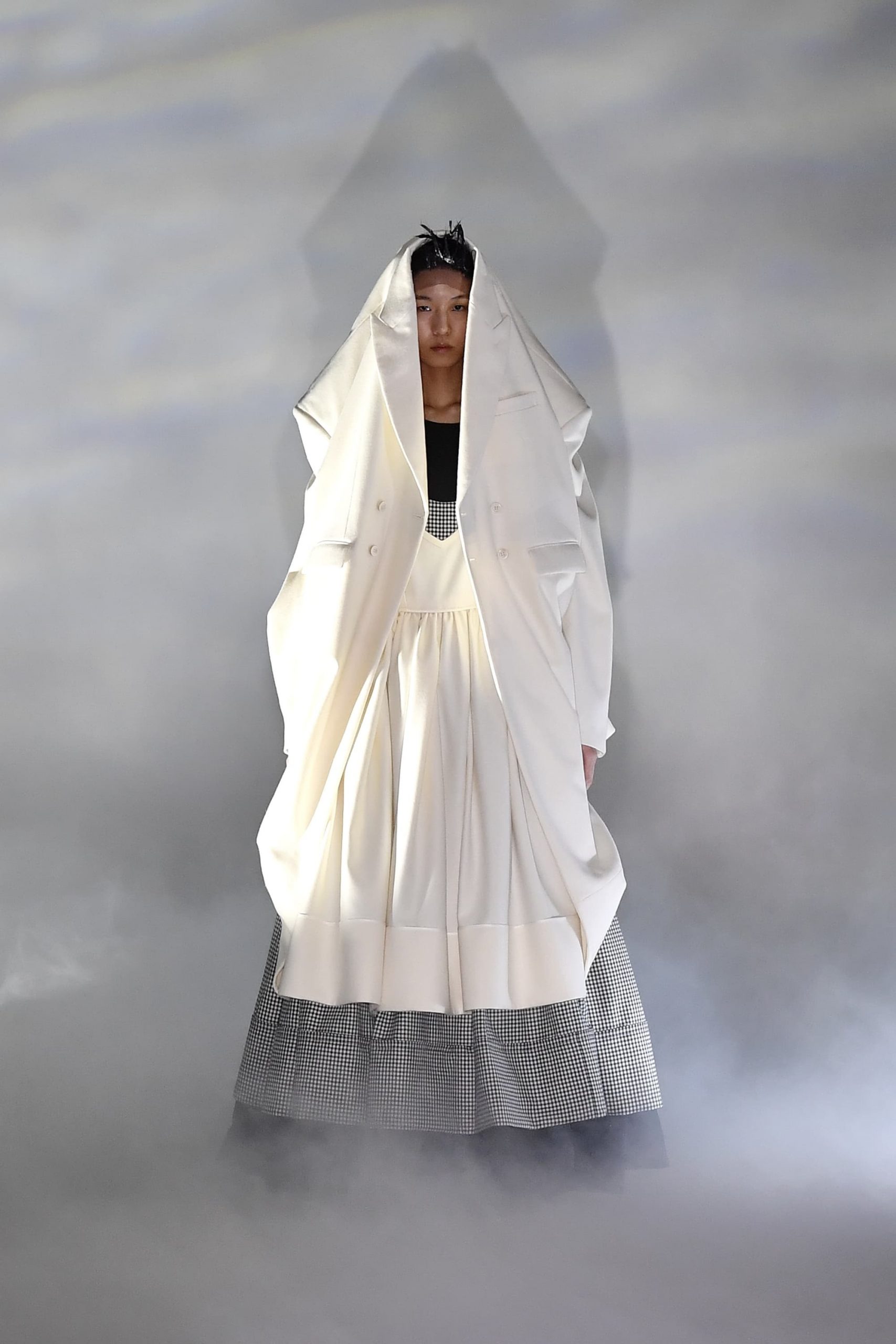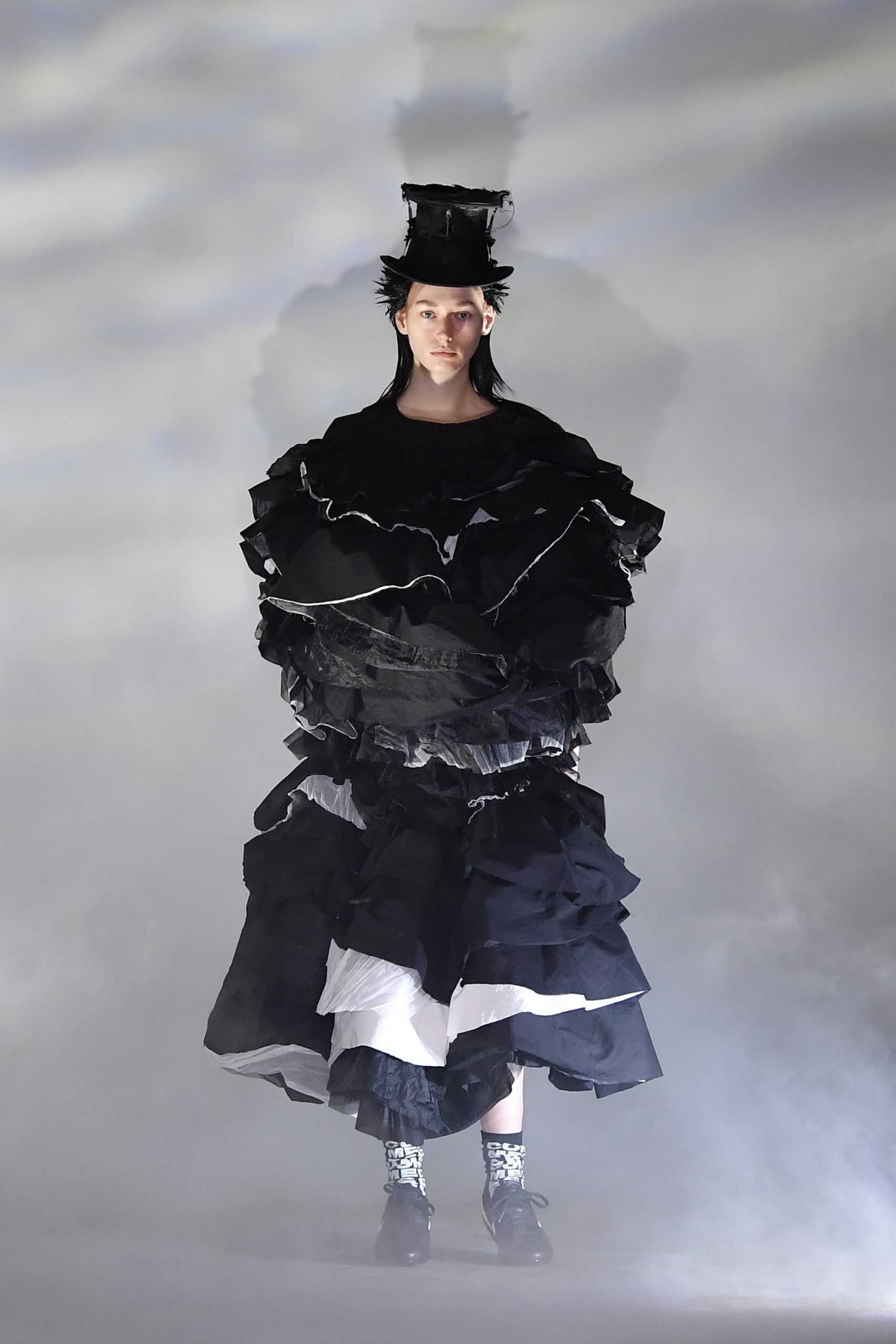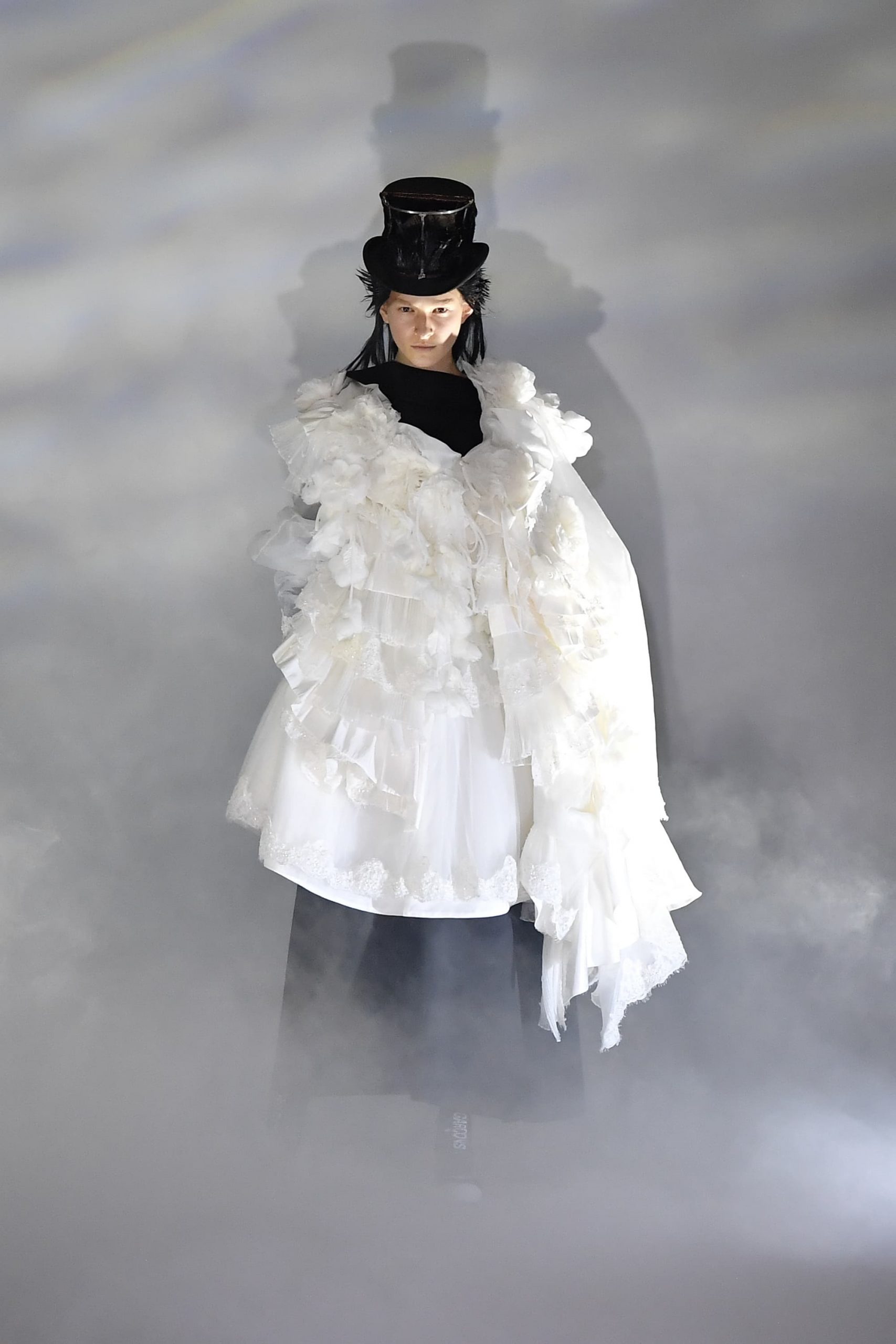Review of Comme des Garçons Fall 2021 Fashion Show
LANDSCAPES OF SHADOWS
Fashion’s Rebirth in Black & White
By Long Nguyen
One key question in the pandemic year has been the role of creative fashion and how and whether designers put this question of creativity at the center of their work or compromise a bit and perhaps make it easier to sell clothes in the meantime.
But darkness – either natural or cultural – has never been a notion that Rei Kawakubo shied away from deep exploration.
Death, birth, and life have always played critical roles in Kawakubo’s collections for Comme des Garçons. Especially in the past decade shows where she narrated the different high points of life on the 3D surfaces of giant crinoline volume satin or patchwork dresses spanning centuries to recount the dramas of modern life.
The Spring 2012 ‘White Drama’ collection told the story of life, marriage, and death in outfits like a white silk dress with a bubble skirt and a giant bow tying the model’s hand together. That spring show was in the shadow of the devastating earthquake six months prior, causing not just physical but psychological damages. Or in the mighty Fall 2015 ‘The Ceremony of Separation’ show where grief, sadness, and finality led to an outpouring of creative energy into those gigantic silhouettes in white, black, and gold that at times seemed to have wholly trapped the body with its total cocooning envelopments.
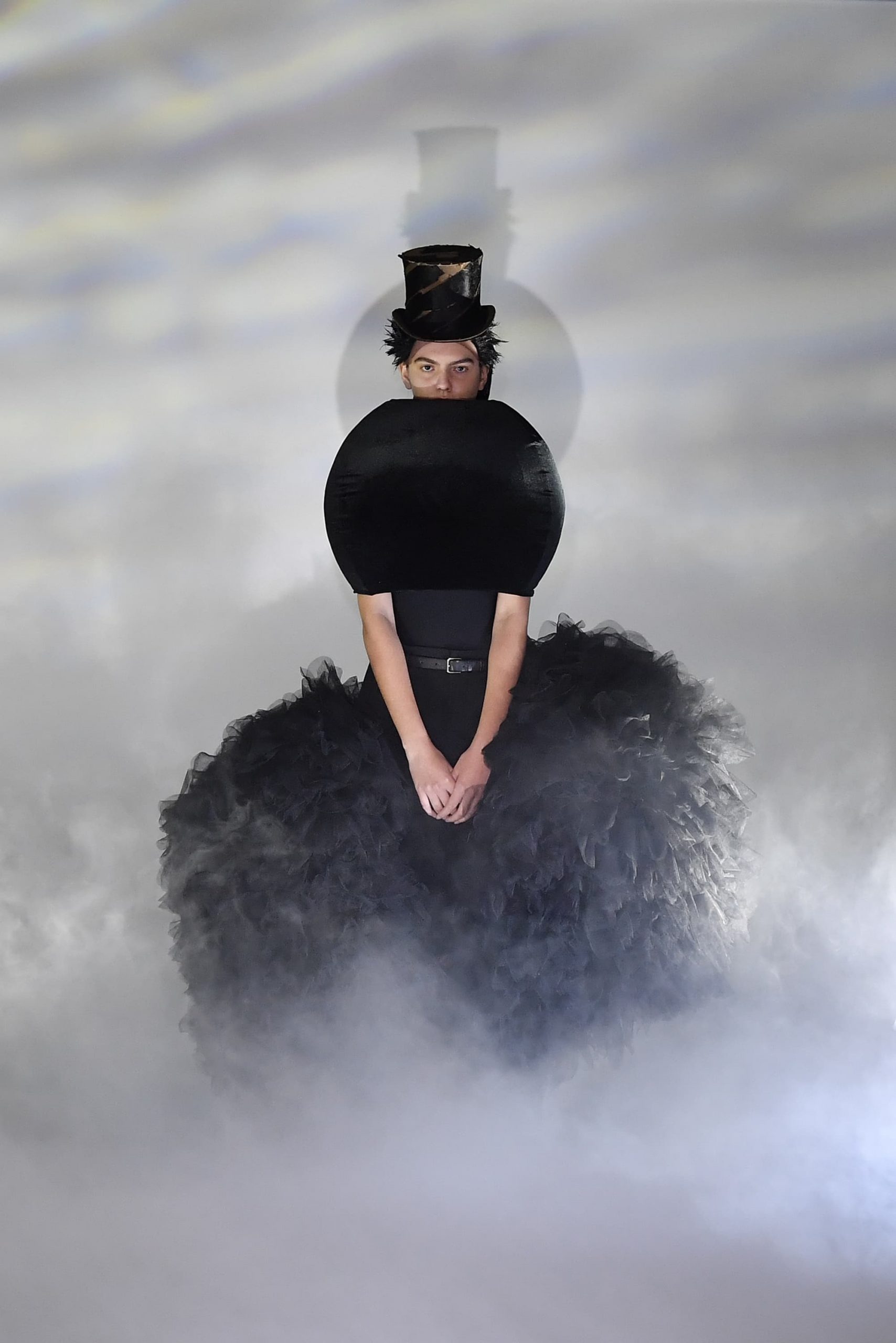
“Amidst the incessant overflowing of miscellaneous things, the deluge of color, the flooding of sound, and the inundation of information … I needed to take one breath in the monochrome serenity,” Kawakubo said in her statement of this fall collection mini-show at the brand’s Tokyo headquarters.
Out of this noise now lived between the real and the digital worlds, the designer succinctly suggests the return of fashion design as a way forward.
This stellar collection is abetting many of the familiar shapes shown in the recent collections into much softer and even poetic clothes emphasizing emotion and less focus on intellect.
Here in this fall show, there is a sense of calmness and maybe a bit of restraint but not any sense of unease. This precise approach to fashion from the multitude of angels offers a sense of where we are today.
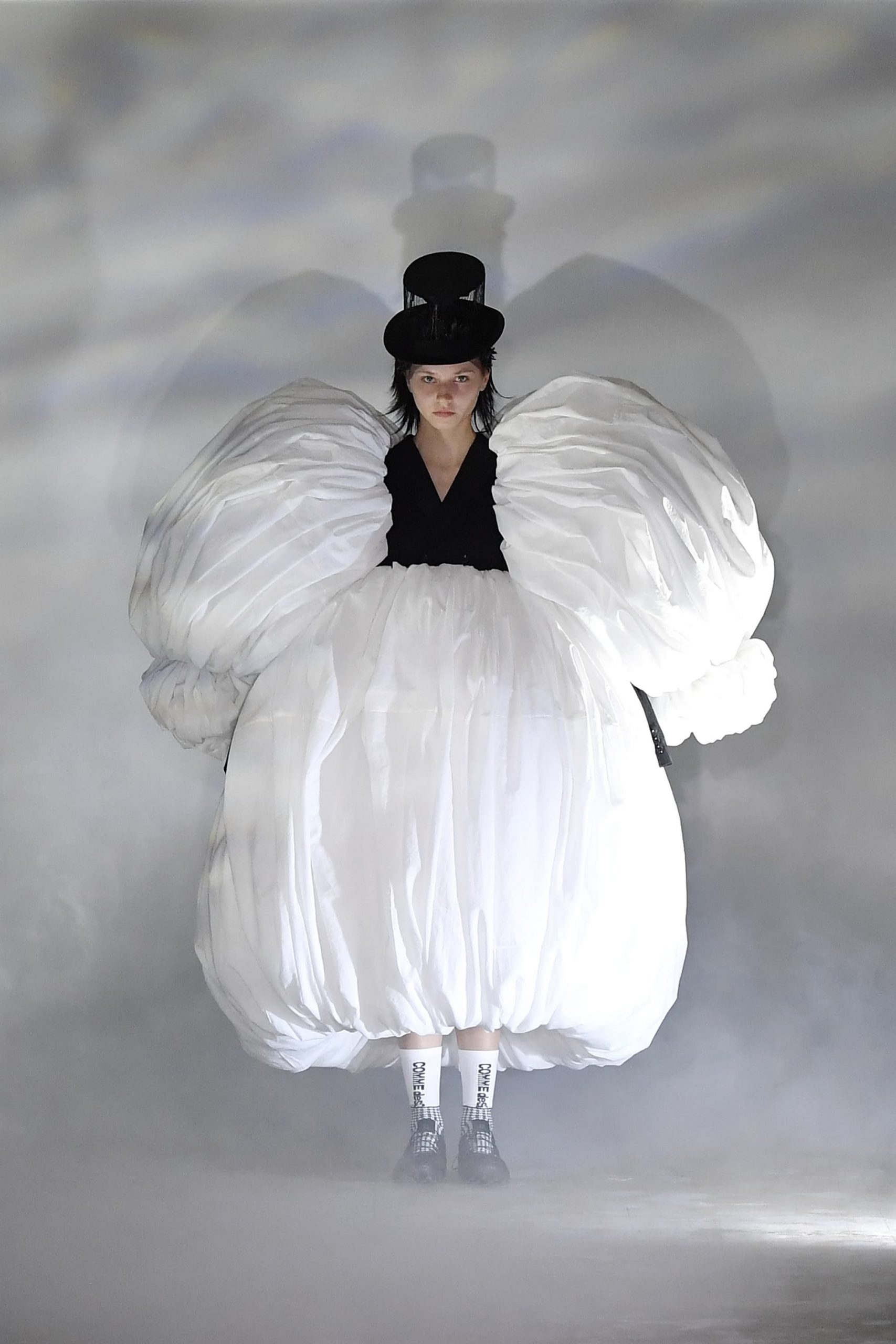
A few of these shapes are recurring Comme des Garçons silhouettes in their overwhelming acts of liberation in the present now. While their forms may recall those overblown 19th-century dress’ figures aided by the bustles and crinolines, these fall garments have little appetite for staying in the past. A black and white gingham long dress with a white apron dress on top has the feel of the old prairie dresses, but the giant unstructured double breast coat worn over the dress made the look more now than then. The massive overlay of black tulle in layers and layers to form the volume of a black dress with what appears to be white cotton very long sleeves – can that suggest someone entirely buried by the surrounding cloth?
The optical shape of black circular top with long sleeve paired with a rigid and structured bubble floor-length skirt or as a white bubble skirt with a white single breast jacket reminded me of the Fall 2017 ‘The Future of the Silhouette’ show in March 2017 a few months before the opening of the exhibition at the Met Museum that May.
While those bubble shapes back then had more of a theoretical sensibility in questioning the limits of the forms of clothes, the answers suggest that they can be actual wearable clothes rather than clothes in theory. The rigid black short sleeve round ‘tee shirt’ top paired with a black tulle layered skirt is one great example from the fall of this evolution.
Those bows, a CDG motif, are present too, now tying into knots on the exterior of a black coat. Yet even in a crisis, there is no sense of anger present here. Even if there are the rough twists of bows into arbitrary knots or the wavy circular layers forming a top and a skirt, the coarseness in their constructions does not concoct the notion of depravity solely.
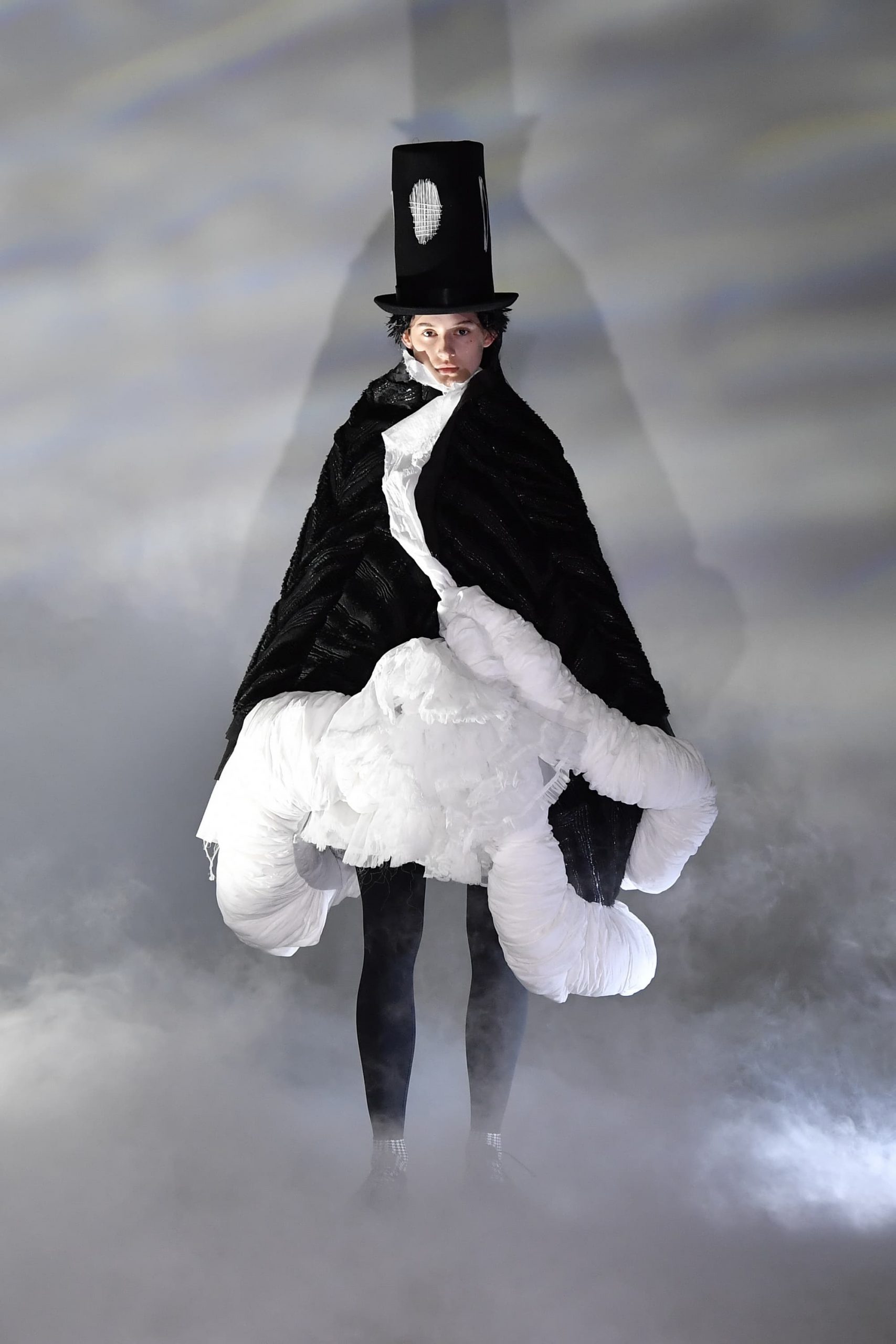
What makes this show unique in fashion is how Kawakubo can channel the energy of creative freedom into crafting each outfit that celebrates the ceremonial grandeur that fashion can bring to this occasion.
The designer rises above the bleakness in monochrome black and white with layers of cloths cut, frayed, tied, and accentuated here and there with a dash of white cotton peeking from underneath, suggesting some kinds of movements.
Rituals always play a central role at CDG.
The clothes can narrate stories of life and death no matter how complex or simple they are. Out of this mess is a sense of rebirth. The black dress made from deforming and stretching a white shirt on top with black cotton fabrics with a 3D protruding waist to the side with upside-down white shirt collars falling at the bottom is perhaps a symbol of regeneration.
But, as with the uneven and asymmetrical cuts of the merged series of ‘shirts’ into a dress, the process of rebirth involves pain and also creation – by meshing together items to make something different. There is no beauty without a bit of struggle and slight pain.
Maybe looking for logical meaning is superfluous here. Yet, the parodic exploration of shapes triggers a sense of beauty and calm, like being inside the eye of a major hurricane.
In the end, though, Kawajubo left her audience with a stunning black folded cape with white circular tulle wrapping around the trims over a pair of black and white polka dots tights, black logo sock and a pair of Nike with the heels made from regenerated material from a previous body of sneakers.
